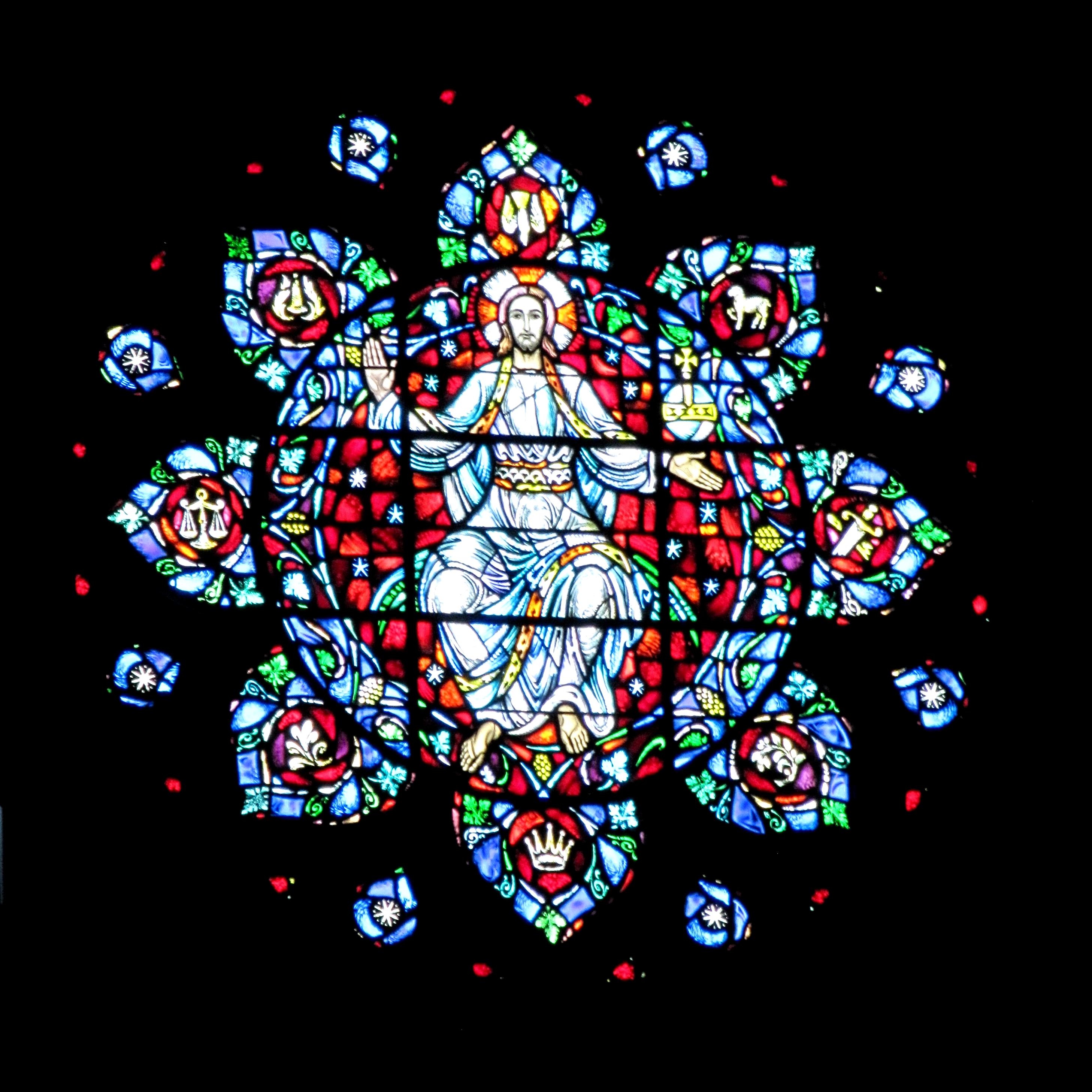
The round window at the site of the Marsh Chapel Experiment supervised by Walter Pahnke
Forms which are evocative of mandalas are prevalent in Christianity: the celtic cross; the rosary; the halo; the aureole; oculi; the Crown of Thorns; rose windows; the Rosy Cross; and the dromenon on the floor of Chartres Cathedral. The dromenon represents a journey from the outer world to the inner sacred centre where the Divine is found.
Similarly, many of the Illuminations of Hildegard von Bingen can be used as mandalas, as well as many of the images of esoteric Christianity, as in Christian Hermeticism, Christian Alchemy, and Rosicrucianism.
The Layer Monument, an early 17th century marble mural funerary monument at the Church of Saint John the Baptist, Maddermarket, Norwich, is a rare example of Christian iconography absorbing alchemical symbolism to create a mandala in Western funerary art.

The round window at the site of the Marsh Chapel Experiment supervised by Walter Pahnke
According to art therapist and mental health counselor Susanne F. Fincher, we owe the re-introduction of mandalas into modern Western thought to Carl Jung, the Swiss psychoanalyst. In his pioneering exploration of the unconscious through his own art making, Jung observed the motif of the circle spontaneously appearing. The circle drawings reflected his inner state at that moment. Familiarity with the philosophical writings of India prompted Jung to adopt the word "mandala" to describe these circle drawings he and his patients made. In his autobiography, Jung wrote:
I sketched every morning in a notebook a small circular drawing, ... which seemed to correspond to my inner situation at the time. ... Only gradually did I discover what the mandala really is: ... the Self, the wholeness of the personality, which if all goes well is harmonious.
— Carl Jung, Memories, Dreams, Reflections, pp. 195–196.
Jung recognized that the urge to make mandalas emerges during moments of intense personal growth. Their appearance indicates a profound re-balancing process is underway in the psyche. The result of the process is a more complex and better integrated personality.
The mandala serves a conservative purpose—namely, to restore a previously existing order. But it also serves the creative purpose of giving expression and form to something that does not yet exist, something new and unique. ... The process is that of the ascending spiral, which grows upward while simultaneously returning again and again to the same point.
— Jungian analyst Marie-Louise von Franz, C. G. Jung: Man and His Symbols, p. 225
Creating mandalas helps stabilize, integrate, and re-order inner life.
According to the psychologist David Fontana, its symbolic nature can help one "to access progressively deeper levels of the unconscious, ultimately assisting the meditator to experience a mystical sense of oneness with the ultimate unity from which the cosmos in all its manifold forms arises."